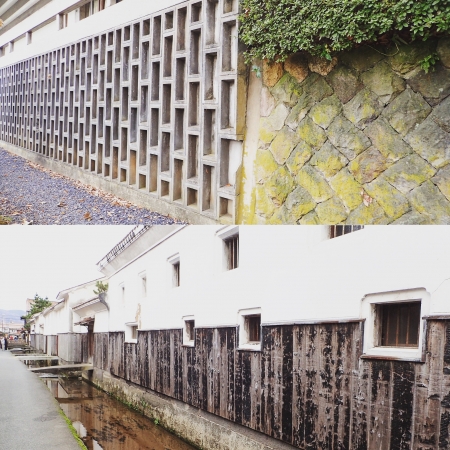幾何学形態の個別性
幾何学形態を組合せていけばいく程、個別性が高くなり、それはある意味、完全で完璧な形に近づいていくことであり、そうすると、汎用性は無くなり、より洗練された表現になる。
その代わり、そこに何かを付け足すことは不可能になり、そういう意味では自由度が無くなるから、ただその幾何学形態を受け入れるしかないことになる。
たくさんの幾何学形態で組合せられたもの、それを幾何学模様として見ることはあるが、それは完成度が高く、それはひとつの作品として、そのまま受け入れるしかない。
それはそれで素晴らしいことだが、見る側、使う側の自由度は無い。見る側、使う側によって何も変えることができない。見る側、使う側にとっては、幾何学形態に自分を合わせるだけ、それで合わせていて、幾何学形態の持つより高い次元のものを手に入れることはできるかもしれないが、それは自分では無い。
日常の中での幾何学形態の個別性は程々、7:3くらい、がちょうど良いかもしれない。
"Individuality of geometric forms"
The more geometrical forms are combined, the more individuality is, in a sense, approaching a perfect and perfect shape, which is less versatile and results in a more sophisticated expression.
Instead, it becomes impossible to add anything to it, and in that sense there is no freedom, so you have to just accept the geometric form.
There are many combinations of geometrical forms, which we sometimes see as geometric patterns, but they have a high degree of perfection and can only be accepted as a single work.
That's great, but there is no freedom for the viewer or the user. Nothing can be changed by the viewer or the user. For the observer and the user, it may be possible to get the higher dimensional of the geometric form by just adjusting himself to the geometric form, but that is not myself.
The individuality of geometric forms in everyday life is about 7: 3, which may be just right.

